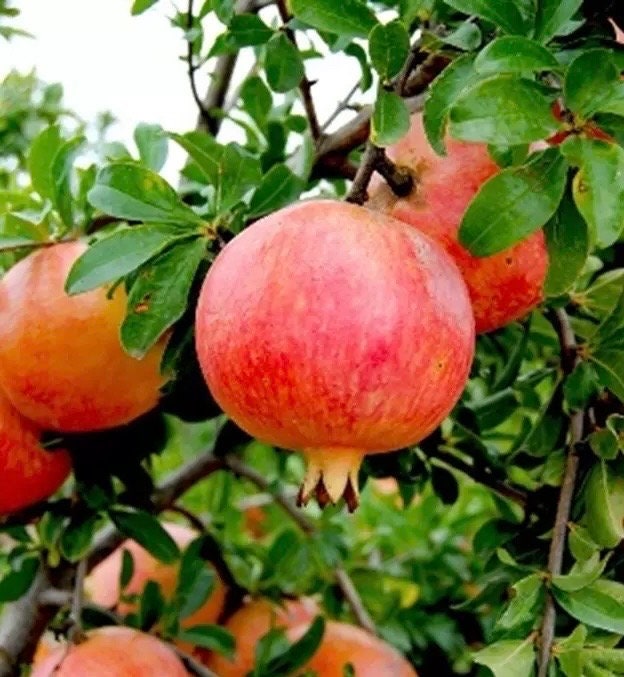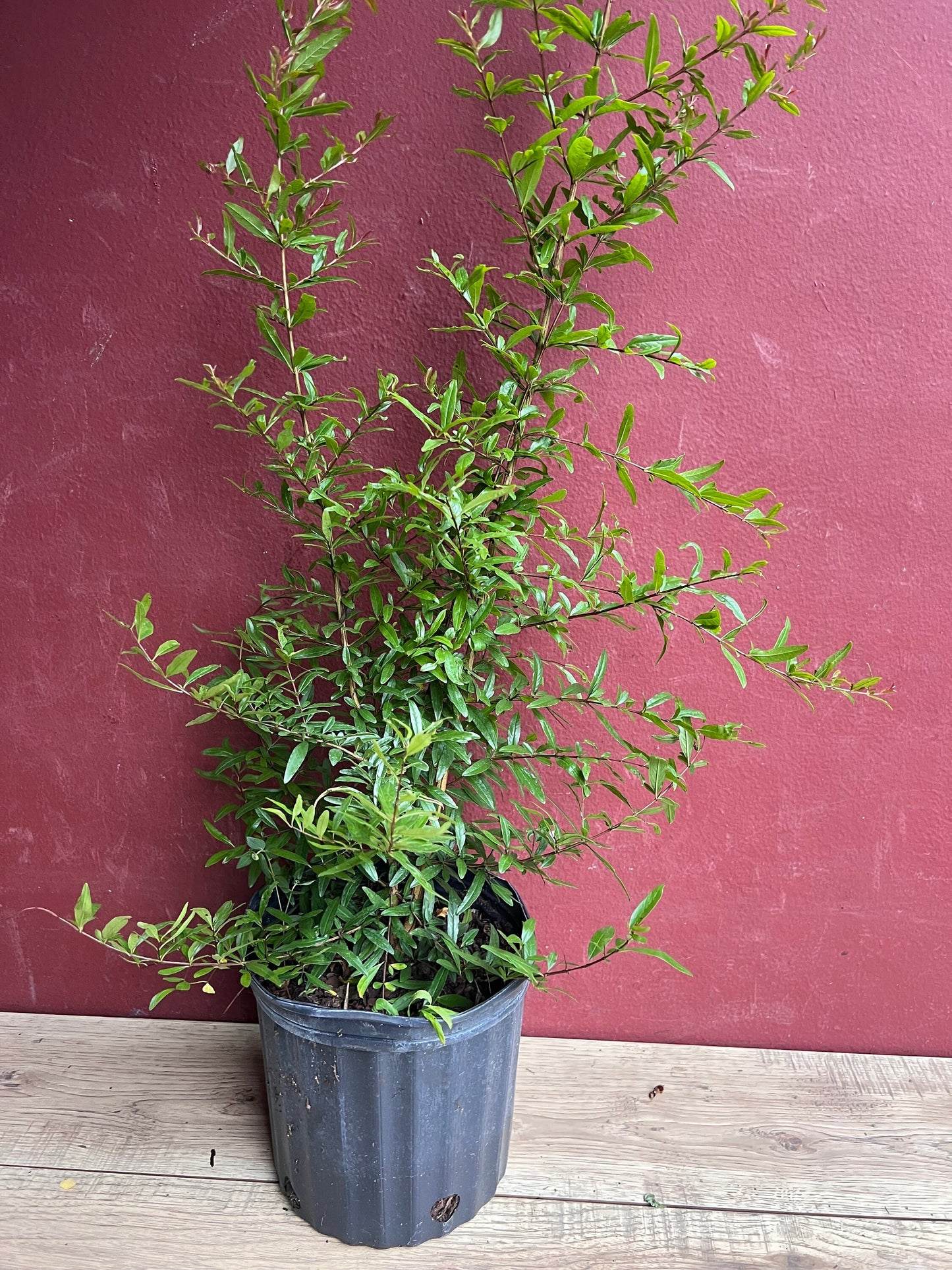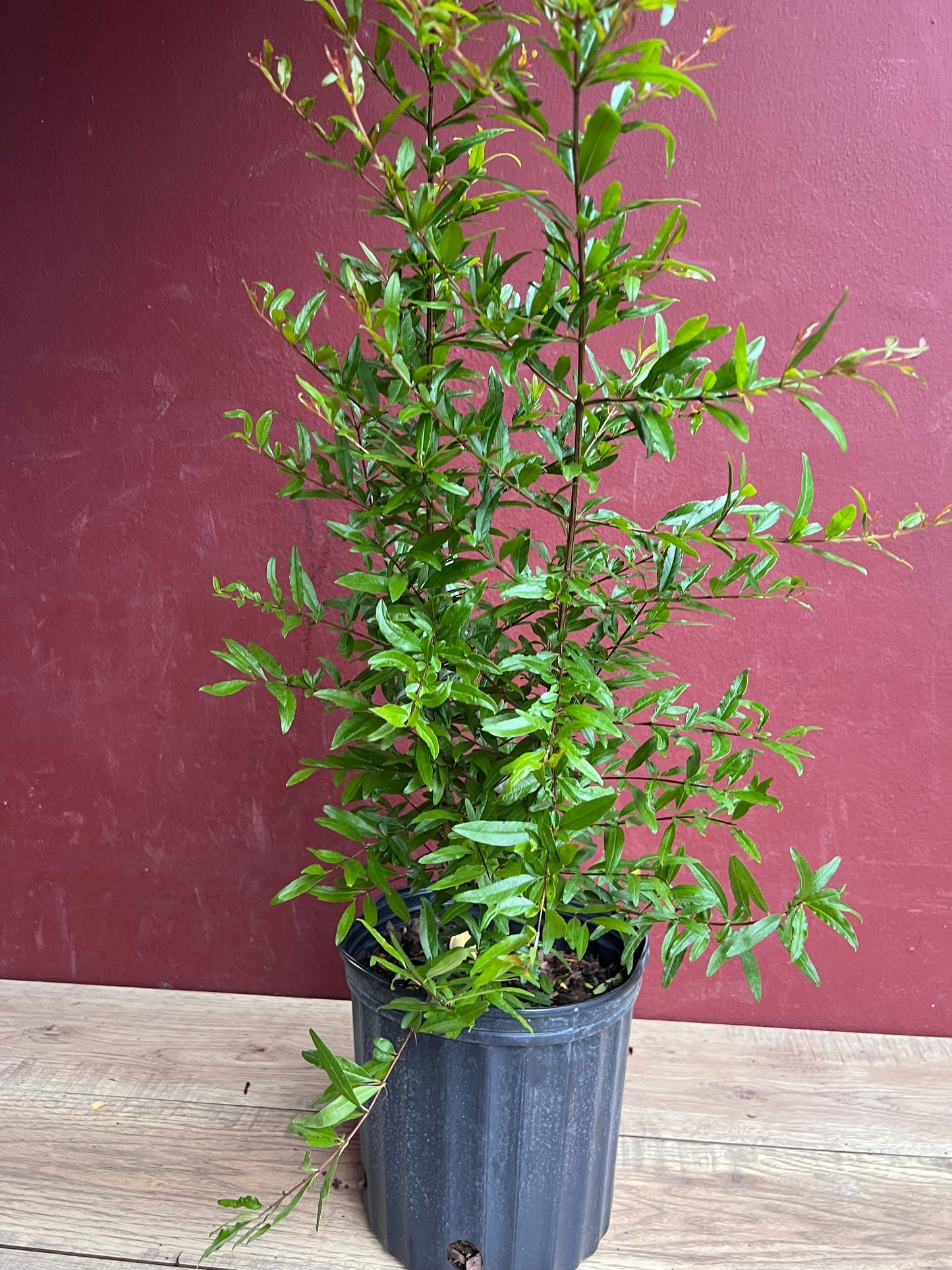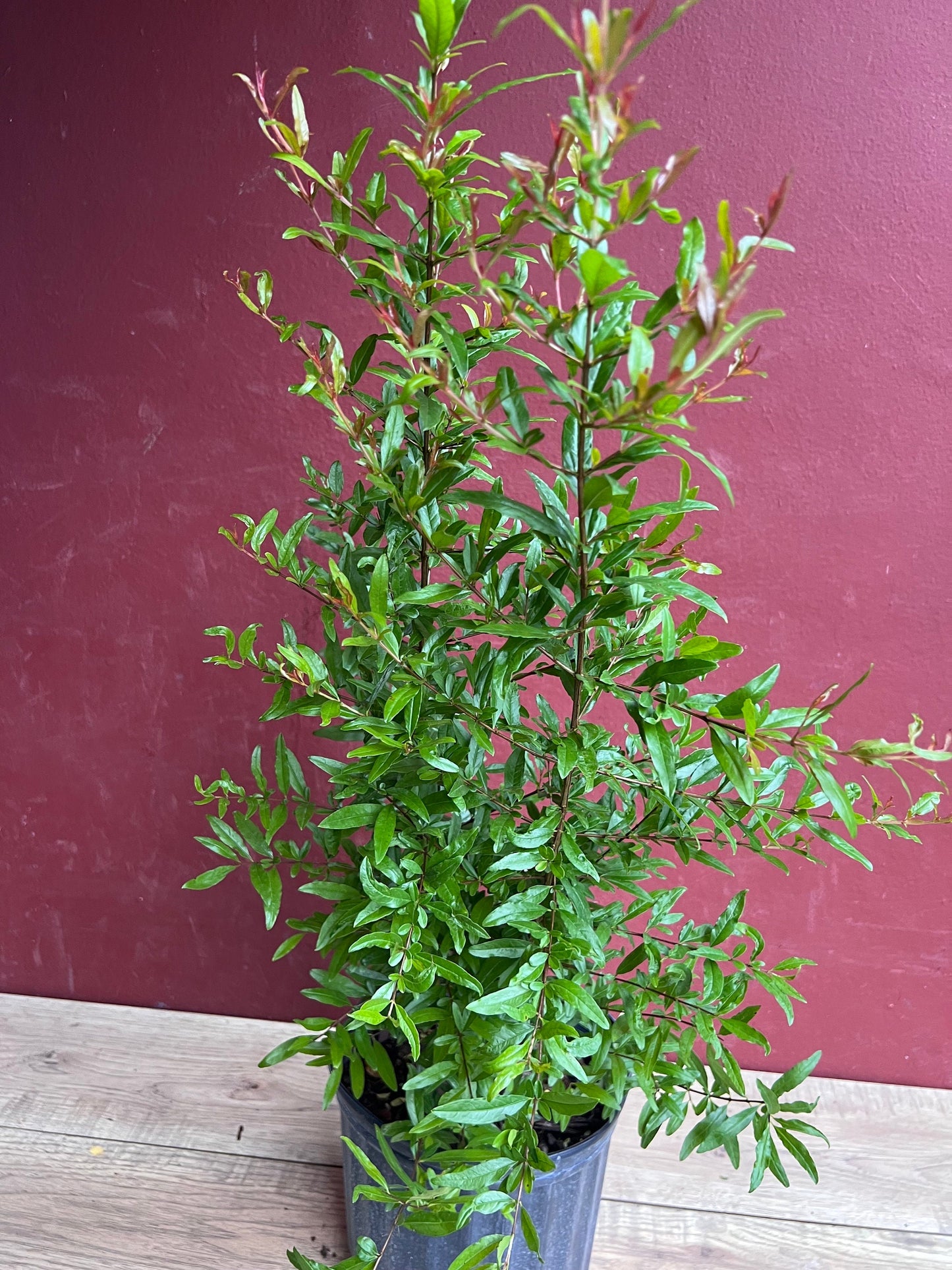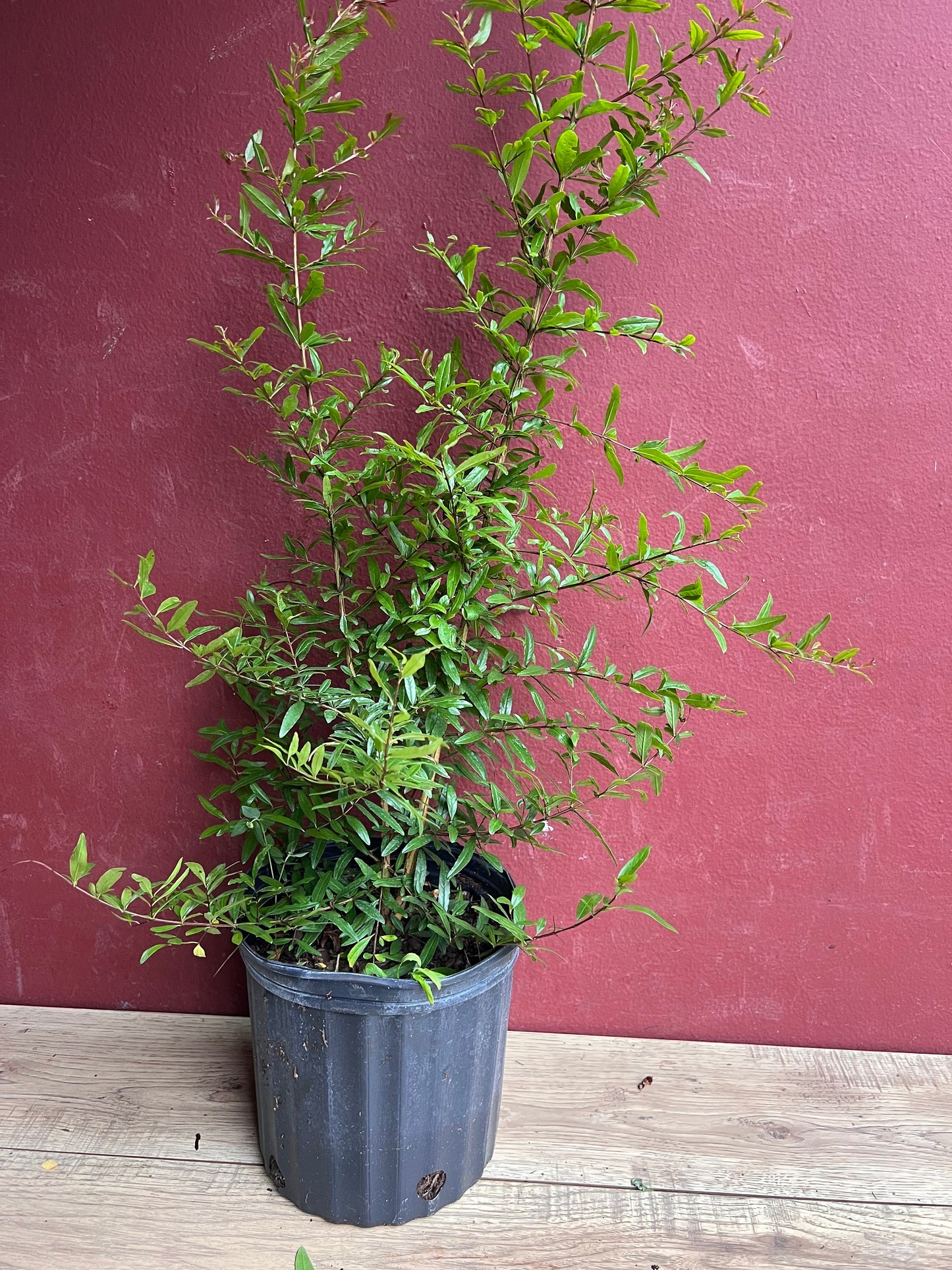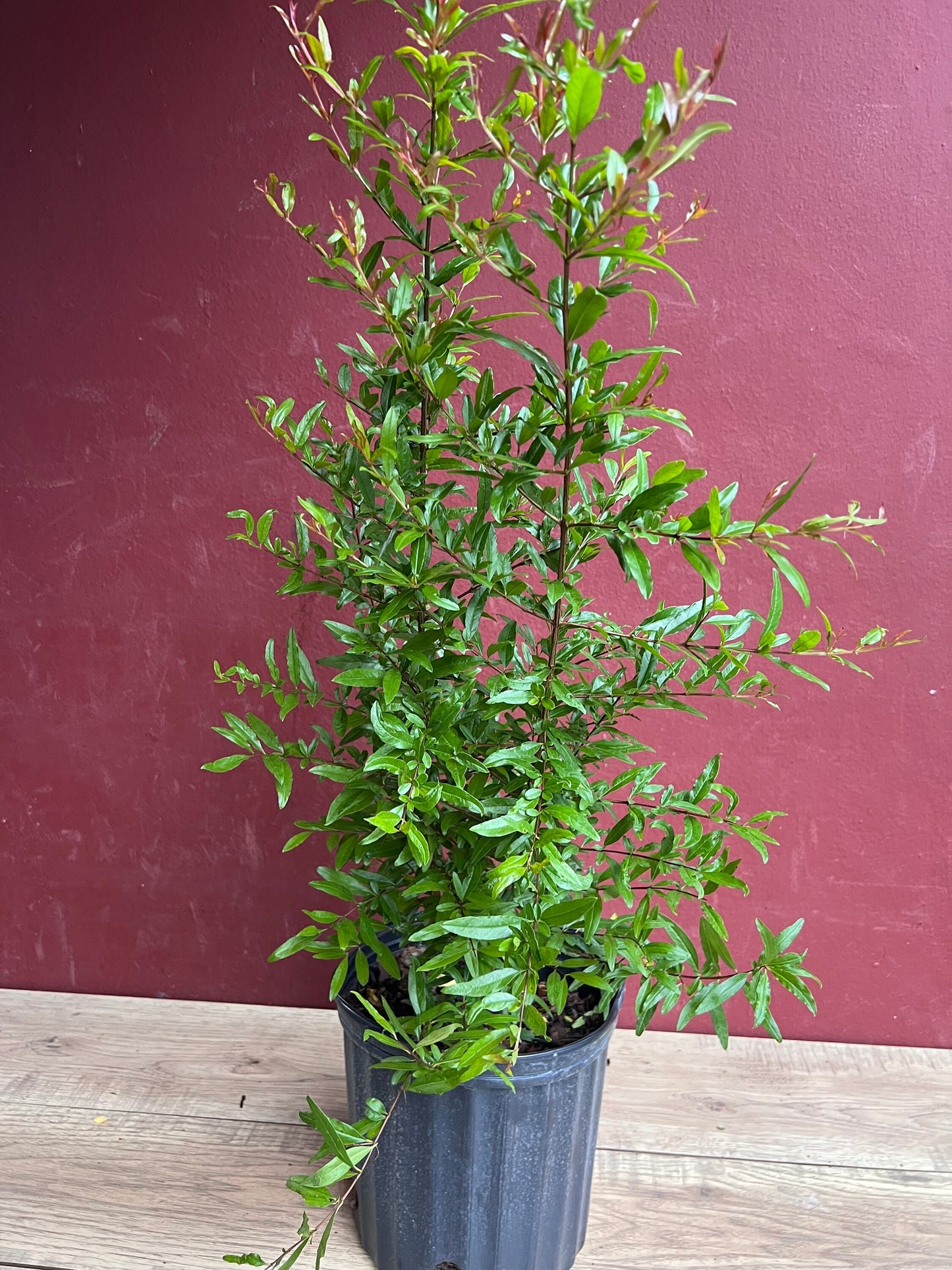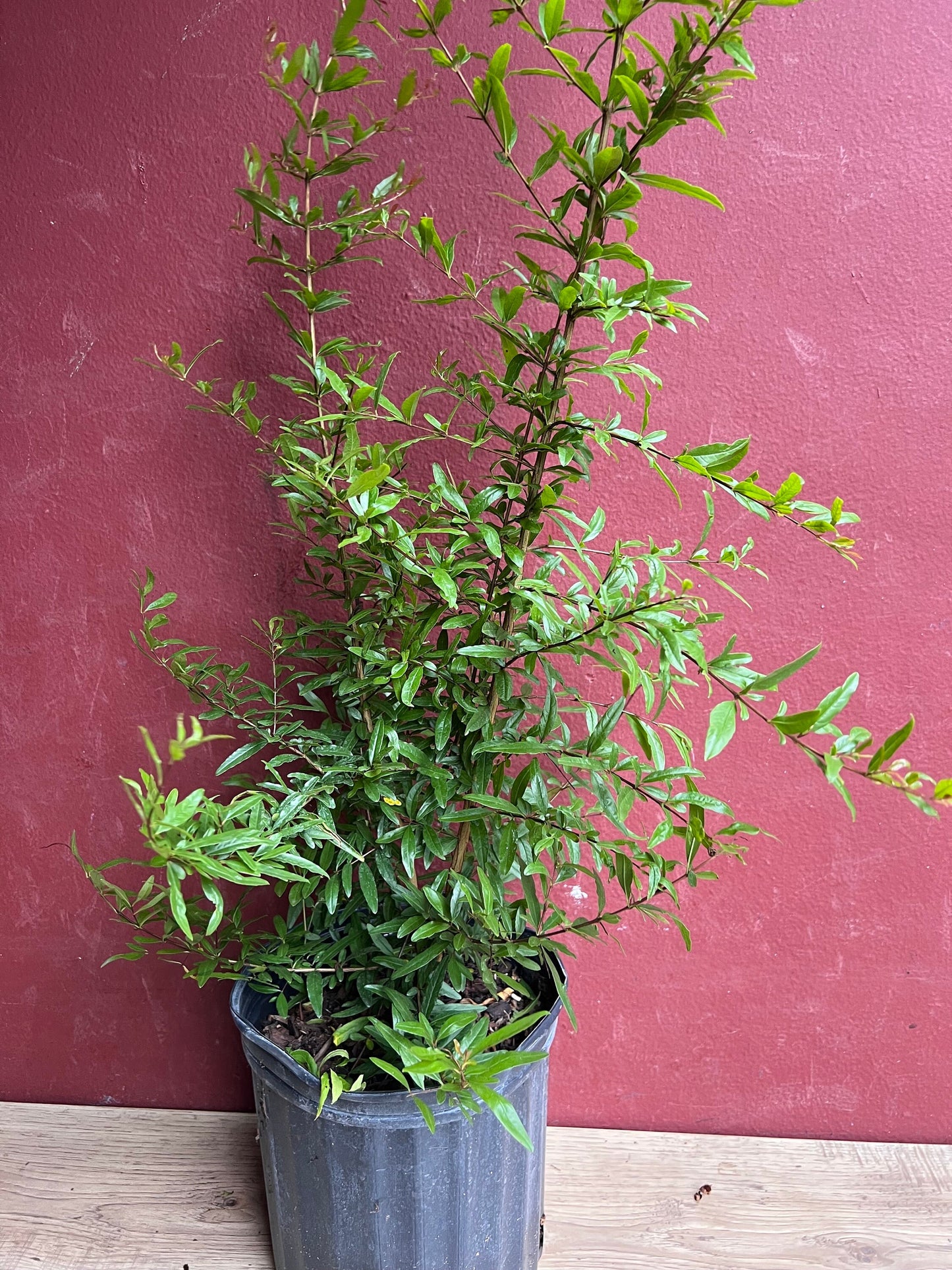Wonderful Pomegranate in 3 gallon pot, delima
Wonderful Pomegranate in 3 gallon pot, delima
Couldn't load pickup availability
Note: You will receive Wonderful pomegranate t Tree in 3 Gallon pot similar to the pictures
The Wonderful Pomegranate (Punica granatum 'Wonderful') is a popular variety known for its large, sweet-tart fruits with vibrant red skin and jewel-like, juicy arils. This deciduous shrub or small tree is prized both for its ornamental value and its nutrient-rich fruit, which is high in antioxidants and vitamin C. Typically growing to 10-12 feet (3-4 meters), the tree produces striking orange-red flowers in late spring to early summer, followed by fruit that ripens in the fall. Wonderful pomegranates thrive in warm, Mediterranean climates and require full sun and well-draining soil to produce the best fruit. Once established, they are drought-tolerant and low-maintenance, making them ideal for home gardens, orchards, or containers.
Care Guide for Wonderful Pomegranate (Punica granatum 'Wonderful')
-
Light
- Full sun is essential for pomegranates, requiring at least 6-8 hours of direct sunlight daily. This is crucial for fruit production, vibrant flowers, and rich fruit color.
-
Soil
- The tree prefers well-draining soil that is slightly acidic to neutral (pH 5.5-7). It tolerates a range of soil types, including sandy and loamy soils. Ensure good drainage to prevent root rot. Heavy clay soils should be amended with organic matter for better aeration.
-
Watering
- While drought-tolerant once established, pomegranates need regular watering during the growing season for quality fruit. Water deeply and allow the soil to dry out between waterings. In dry climates, water more frequently during fruit set and ripening. Reduce watering in winter when the tree is dormant.
-
Temperature
- Wonderful pomegranates thrive in warm, Mediterranean climates with temperatures between 75°F and 90°F (24°C to 32°C). They are not frost-tolerant and should be protected from freezing temperatures (below 20°F or -6°C). In colder regions, grow pomegranates in containers that can be moved indoors in winter.
-
Fertilization
- Fertilize in early spring with a balanced, slow-release fertilizer or one formulated for fruit trees. Organic matter like compost can also be used. Avoid over-fertilizing with nitrogen, as it can lead to excessive foliage growth rather than fruit production. A light fertilization in late summer may support fruit development.
-
Pruning
- Light pruning is beneficial to shape the tree and remove dead or damaged branches. Prune in late winter or early spring before new growth begins. Be careful not to over-prune, as pomegranates fruit on new growth, and excessive pruning can reduce yields.
-
Pests and Diseases
- Pomegranates are generally pest-resistant but can occasionally face issues with aphids, whiteflies, or pomegranate butterflies. Treat infestations with insecticidal soap or neem oil. In terms of diseases, ensure proper drainage to avoid root rot and fungal diseases like leaf spot, which thrive in overly moist conditions.
-
Harvesting
- Pomegranates are ready for harvest in the fall when the skin turns deep red, and the fruit feels heavy for its size. The fruit should make a metallic, ringing sound when tapped. Harvest carefully with pruning shears, leaving a short stem attached to avoid damaging the delicate fruit.
-
Winter Care
- In regions with occasional frost, protect the tree during winter by covering it with frost cloth or moving it to a sheltered location. Pomegranates are hardy to USDA zones 7-10, but in colder zones, container growing allows you to bring the tree indoors during winter.
Share
